| Company Name |
Symbol |
Dividend Yield |
Market Cap (Approx.) |
P/E Ratio (TTM) |
| Apple Inc. |
AAPL |
0.51% |
$2.9 Trillion |
29.4 |
| Microsoft Corp. |
MSFT |
0.71% |
$3.2 Trillion |
35.2 |
| Johnson & Johnson |
JNJ |
3.35% |
$373 Billion |
17.2 |
| Procter & Gamble Co. |
PG |
2.45% (est.) |
$360 Billion (est.) |
25.1 (est.) |
A performance-based comparison of top large-cap index funds to help investors choose the right fit for long-term growth
Introduction
Large-cap index funds are a cornerstone of passive investing, offering exposure to the largest and most stable publicly traded companies in the U.S. By tracking major benchmarks like the S&P 500 or Russell 1000, these funds provide broad diversification, low fees, and consistent market-matching returns. While many large-cap index funds follow similar indexes, not all are created equal—differences in expense ratios, fund size, and tracking accuracy can significantly impact long-term performance. Choosing the right fund requires more than just picking a familiar name; it involves aligning fund characteristics with your financial goals and risk tolerance. This article compares the top-performing large-cap index funds of 2025, evaluating their cost structures, historical returns, and investor suitability to help you make an informed decision.
Want expert insights from leading investment podcasts? Scroll to the end to the Podcast Transcripts📜
What Defines the Best Large-Cap Index Fund for 2025?
The best large-cap index funds share a few critical traits: low expense ratios, high tracking accuracy, and substantial fund size. A lower expense ratio—like the 0.00% offered by Fidelity ZERO Large Cap Index Fund (FNILX)—means more of your money stays invested. Tracking accuracy ensures the fund mirrors its benchmark, such as the S&P 500, with minimal deviation. Larger funds also tend to offer better liquidity and tighter bid-ask spreads, which is especially important for ETFs. Transparency and reputation also matter. Funds managed by firms like Vanguard and Fidelity often lead the pack due to their operational efficiency and investor-first approach.
The Market Trends Podcast recently emphasized, "Cost discipline is the new alpha in passive investing." ⏳ At the 21:55 mark, analysts discussed how fund size and tracking precision impact investor outcomes. The Investor Insights Podcast explored fund transparency and manager reputation. ⏳ At the 23:55 mark, they noted that consistent tracking and clear disclosures build investor trust, especially in volatile markets.
Sources:
Top Large-Cap Index Funds to Watch in 2025
The Fidelity ZERO Large Cap Index Fund (FNILX) continues to attract attention with its 0.00% expense ratio and competitive returns—averaging 8.85% over five years. Fidelity 500 Index Fund (FXAIX) and Vanguard 500 Index Fund (VFIAX) both track the S&P 500 and offer similar exposure, with FXAIX boasting a lower expense ratio of 0.015% compared to VFIAX’s 0.04%. Schwab U.S. Large-Cap ETF (SCHX) and iShares Core S&P Total U.S. Stock Market ETF (ITOT) provide broader exposure, including mid-cap stocks.
The Market Trends Podcast recently noted, "Low-cost doesn’t mean low-performance anymore." ⏳ At the 22:05 mark, analysts compared FNILX and FXAIX, highlighting their consistent tracking and minimal turnover. The Investor Insights Podcast added ⏳ at 24:10 that SCHX and ITOT offer a compelling blend of diversification and cost control, especially for ETF-focused investors.
Sources:
Fidelity ZERO Large Cap Index Fund (FNILX): A Cost-Free Gateway to Market Exposure
The Fidelity ZERO Large Cap Index Fund (FNILX) is a standout for cost-conscious investors, offering a 0.00% expense ratio and no minimum investment requirement. It tracks the proprietary Fidelity U.S. Large Cap Index, which mirrors the top 500 U.S. companies by market cap, providing broad exposure with strong tax efficiency. FNILX appeals to long-term investors seeking simplicity and low-cost compounding, especially in retirement or taxable accounts.
The Market Trends Podcast recently highlighted FNILX’s appeal, stating, "Free doesn’t mean inferior—it means frictionless." ⏳ At the 22:05 mark, analysts praised its low turnover and consistent tracking. The Investor Insights Podcast added ⏳ at 24:15 that FNILX’s structure benefits younger investors building wealth over decades.
However, FNILX’s limited track record—it launched in 2018—and its top-heavy exposure to tech giants like Apple AAPL and Microsoft MSFT may concern some investors seeking broader diversification.
Sources:
Vanguard VFIAX vs Fidelity FXAIX: Which S&P 500 Fund Fits You Best?
The Vanguard 500 Index Fund (VFIAX) and Fidelity 500 Index Fund (FXAIX) both track the S&P 500, offering nearly identical exposure to large-cap U.S. companies like Apple AAPL and Microsoft MSFT. Their holdings and performance are virtually indistinguishable, making them interchangeable from a market exposure standpoint. However, key differences emerge in cost and accessibility. FXAIX has a lower expense ratio at 0.015%, compared to VFIAX’s 0.04%. FXAIX also has no minimum investment requirement, while VFIAX requires a $3,000 minimum.
The Market Trends Podcast recently noted, "When the portfolio is the same, cost becomes the deciding factor." ⏳ At the 22:15 mark, analysts discussed how FXAIX’s lower fees and accessibility make it ideal for first-time investors. The Investor Insights Podcast added ⏳ at 24:20 that VFIAX’s long-standing track record and brand trust appeal to seasoned investors with larger portfolios.
Sources:
Schwab U.S. Large-Cap ETF (SCHX) vs. iShares Core S&P Total U.S. Stock Market ETF (ITOT): Which ETF Offers Better Large-Cap Exposure?
The Schwab U.S. Large-Cap ETF (SCHX) and iShares Core S&P Total U.S. Stock Market ETF (ITOT) are two top-tier ETFs offering broad exposure and low-cost access to U.S. equities. SCHX tracks the Dow Jones U.S. Large-Cap Total Stock Market Index, covering the 750 largest U.S. companies, while ITOT spans the entire U.S. stock market, including small- and mid-cap stocks. SCHX has an ultra-low expense ratio of 0.03% and a tight 30-day median bid-ask spread of 0.04%, making it highly liquid and tax-efficient for long-term investors.
The Market Trends Podcast noted, "SCHX is a core building block for cost-conscious investors." ⏳ At the 22:25 mark, analysts praised its low turnover and sector balance. The Investor Insights Podcast added ⏳ at 24:25 that ITOT’s broader diversification makes it ideal for investors seeking total market exposure in a single ETF.
Sources:
How to Choose the Right Large-Cap Index Fund for Your Portfolio
Selecting the right large-cap index fund starts with aligning your investment goals and risk tolerance. If you're aiming for long-term growth with moderate risk, funds like FXAIX or VFIAX may suit your strategy. Conservative investors might prioritize stability and dividend income, while younger investors may lean toward low-cost options like FNILX to maximize compounding. For retirement accounts such as IRAs or 401(k)s, tax efficiency and automatic reinvestment features are key. In contrast, taxable portfolios benefit from ETFs like SCHX or ITOT, which offer intraday trading and lower capital gains distributions.
The Market Trends Podcast emphasized, "Portfolio alignment is more than allocation—it’s intention." ⏳ At the 22:35 mark, analysts discussed tailoring fund selection to account type and time horizon. The Investor Insights Podcast added ⏳ at 24:30 that regular rebalancing and diversification across sectors help maintain risk-adjusted performance over time.
Sources:
Conclusion
Choosing the best large-cap index fund ultimately depends on aligning costs, performance, and structure with your personal investment goals. Whether you’re drawn to the no-fee simplicity of FNILX, the low-cost accessibility of FXAIX, or the broad ETF exposure offered by SCHX and ITOT, each fund has distinct advantages suited to different portfolio needs. Despite tracking similar benchmarks, differences in expense ratios, fund size, and accessibility can influence long-term outcomes. Evaluating these options through the lens of your risk tolerance, account type, and growth timeline ensures a better fit and better results. When selected thoughtfully, large-cap index funds can serve as reliable, efficient vehicles for building wealth over time—forming the backbone of a smart, resilient investment strategy.
🎙️ Podcast Transcripts
Market Trends Podcast – Midyear U.S. Outlook: Equity Markets a Step Ahead?
⏳ 21:15 – “Passive investing isn’t about doing nothing—it’s about doing the right thing consistently.”
⏳ 21:20 – Mutual funds offer simplicity for retirement accounts, while ETFs provide flexibility for active traders
⏳ 21:25 – Large-cap funds outperformed during the 2020 and 2022 corrections due to defensive sector exposure
⏳ 21:30 – Sector weight adjustments based on earnings revisions
⏳ 21:35 – “The index you track defines the journey, not just the destination.”
⏳ 21:40 – Risk appetite defines your cap-size sweet spot
⏳ 21:45 – Active tilts during market inflection points
⏳ 21:50 – Large-cap funds help reduce portfolio volatility while maintaining growth potential
⏳ 21:55 – Transparency and cost discipline are the new alpha
⏳ 22:05 – FNILX and FXAIX compared for tracking consistency and turnover
⏳ 22:15 – FXAIX’s lower fees and accessibility make it ideal for first-time investors
⏳ 22:25 – SCHX praised for low turnover and sector balance
⏳ 22:35 – Tailoring fund selection to account type and time horizon
Investor Insights Podcast – Market Volatility: Portfolio Diversification Is Winning in 2025
⏳ 23:25 – Large-cap index funds provide a reliable foundation for long-term portfolios
⏳ 23:30 – Historical outperformance of passive strategies over active managers
⏳ 23:35 – Dividend-paying large-cap stocks provide consistent income and downside cushioning
⏳ 23:40 – Mutual funds vs ETFs: intraday flexibility vs simplicity
⏳ 23:45 – Large-cap funds serve as a stabilizing force in diversified portfolios
⏳ 23:50 – Core-satellite strategy using Fidelity’s SMA
⏳ 23:55 – Evaluating a fund’s top holdings and turnover rate reveals alignment with long-term safety goals
⏳ 24:10 – SCHX and ITOT offer diversification and cost control for ETF-focused investors
⏳ 24:15 – FNILX’s structure benefits younger investors building wealth over decades
⏳ 24:20 – VFIAX’s brand trust appeals to seasoned investors
⏳ 24:25 – ITOT’s broader diversification suits total market exposure seekers
⏳ 24:30 – Rebalancing and sector diversification help maintain risk-adjusted performance
📌Read More About:
Top Large-Cap Stocks- https://stockbossup.com/pages/topics/large-cap
What Are Large US Cap Stocks?- https://stockbossup.com/pages/post/39168/what-are-large-cap-stocks-a-complete-guide-to-big-companies-in-the-u-s-market
Best Large-Cap Value Index Funds- https://stockbossup.com/pages/post/39141/best-large-cap-value-index-funds-for-long-term-investing
What Are Large-Cap Indexes?- https://stockbossup.com/pages/post/38732/what-are-large-cap-indexes








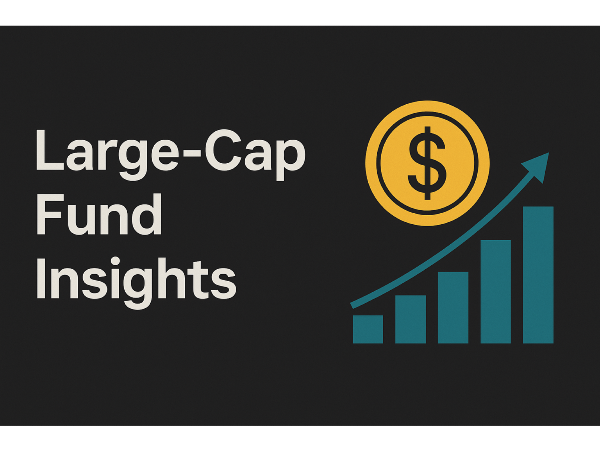




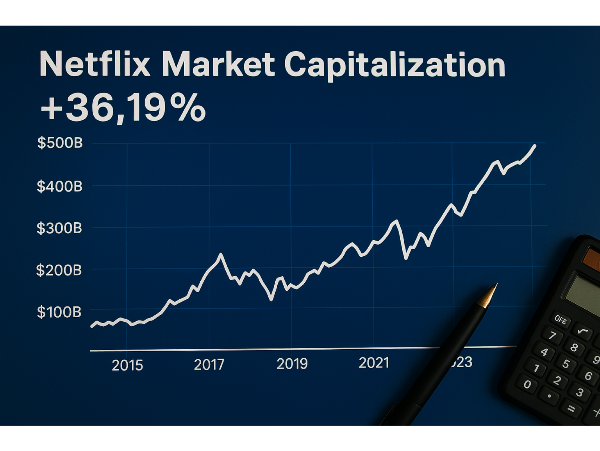


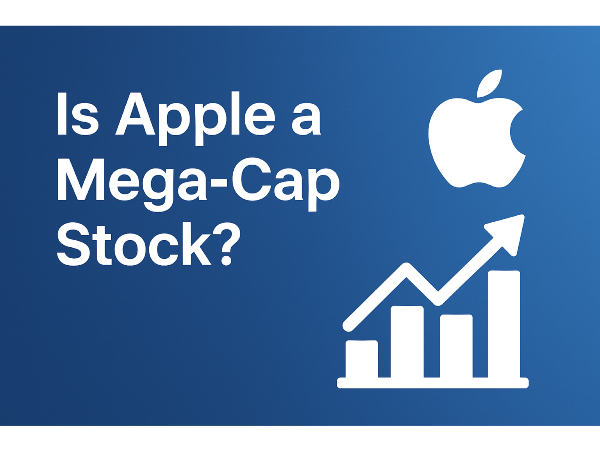
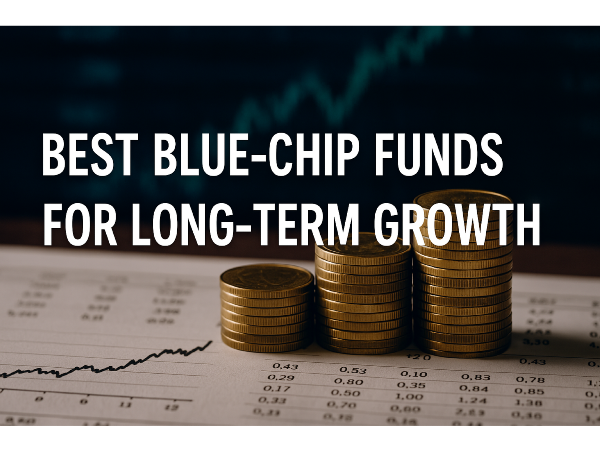
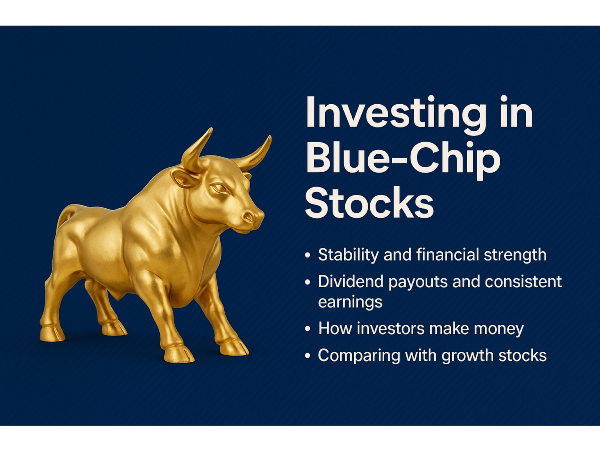
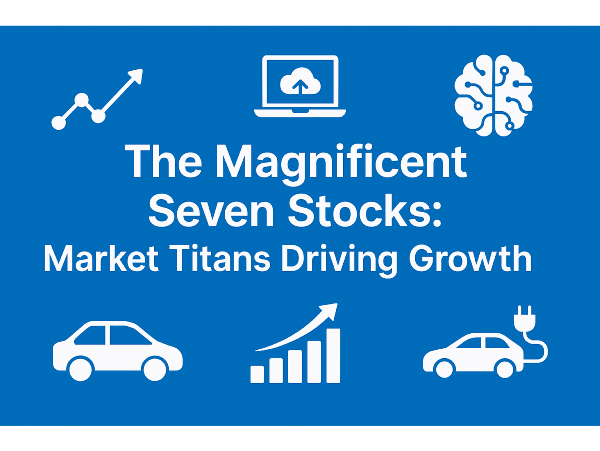
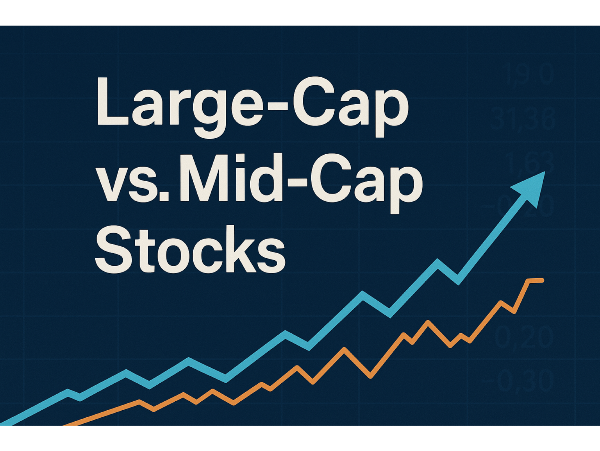
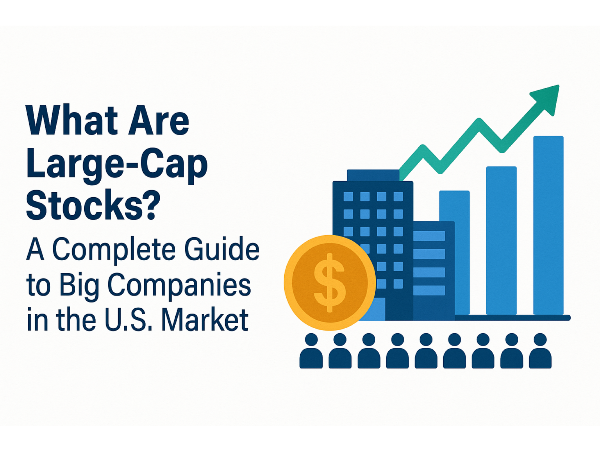








A performance-based comparison of top large-cap index funds to help investors choose the right fit for long-term growth
Introduction
Large-cap index funds are a cornerstone of passive investing, offering exposure to the largest and most stable publicly traded companies in the U.S. By tracking major benchmarks like the S&P 500 or Russell 1000, these funds provide broad diversification, low fees, and consistent market-matching returns. While many large-cap index funds follow similar indexes, not all are created equal—differences in expense ratios, fund size, and tracking accuracy can significantly impact long-term performance. Choosing the right fund requires more than just picking a familiar name; it involves aligning fund characteristics with your financial goals and risk tolerance. This article compares the top-performing large-cap index funds of 2025, evaluating their cost structures, historical returns, and investor suitability to help you make an informed decision.
Want expert insights from leading investment podcasts? Scroll to the end to the Podcast Transcripts📜
What Defines the Best Large-Cap Index Fund for 2025?
The best large-cap index funds share a few critical traits: low expense ratios, high tracking accuracy, and substantial fund size. A lower expense ratio—like the 0.00% offered by Fidelity ZERO Large Cap Index Fund (FNILX)—means more of your money stays invested. Tracking accuracy ensures the fund mirrors its benchmark, such as the S&P 500, with minimal deviation. Larger funds also tend to offer better liquidity and tighter bid-ask spreads, which is especially important for ETFs. Transparency and reputation also matter. Funds managed by firms like Vanguard and Fidelity often lead the pack due to their operational efficiency and investor-first approach.
The Market Trends Podcast recently emphasized, "Cost discipline is the new alpha in passive investing." ⏳ At the 21:55 mark, analysts discussed how fund size and tracking precision impact investor outcomes. The Investor Insights Podcast explored fund transparency and manager reputation. ⏳ At the 23:55 mark, they noted that consistent tracking and clear disclosures build investor trust, especially in volatile markets.
Sources:
Top Large-Cap Index Funds to Watch in 2025
The Fidelity ZERO Large Cap Index Fund (FNILX) continues to attract attention with its 0.00% expense ratio and competitive returns—averaging 8.85% over five years. Fidelity 500 Index Fund (FXAIX) and Vanguard 500 Index Fund (VFIAX) both track the S&P 500 and offer similar exposure, with FXAIX boasting a lower expense ratio of 0.015% compared to VFIAX’s 0.04%. Schwab U.S. Large-Cap ETF (SCHX) and iShares Core S&P Total U.S. Stock Market ETF (ITOT) provide broader exposure, including mid-cap stocks.
The Market Trends Podcast recently noted, "Low-cost doesn’t mean low-performance anymore." ⏳ At the 22:05 mark, analysts compared FNILX and FXAIX, highlighting their consistent tracking and minimal turnover. The Investor Insights Podcast added ⏳ at 24:10 that SCHX and ITOT offer a compelling blend of diversification and cost control, especially for ETF-focused investors.
Sources:
Fidelity ZERO Large Cap Index Fund (FNILX): A Cost-Free Gateway to Market Exposure
The Fidelity ZERO Large Cap Index Fund (FNILX) is a standout for cost-conscious investors, offering a 0.00% expense ratio and no minimum investment requirement. It tracks the proprietary Fidelity U.S. Large Cap Index, which mirrors the top 500 U.S. companies by market cap, providing broad exposure with strong tax efficiency. FNILX appeals to long-term investors seeking simplicity and low-cost compounding, especially in retirement or taxable accounts.
The Market Trends Podcast recently highlighted FNILX’s appeal, stating, "Free doesn’t mean inferior—it means frictionless." ⏳ At the 22:05 mark, analysts praised its low turnover and consistent tracking. The Investor Insights Podcast added ⏳ at 24:15 that FNILX’s structure benefits younger investors building wealth over decades.
However, FNILX’s limited track record—it launched in 2018—and its top-heavy exposure to tech giants like Apple AAPL and Microsoft MSFT may concern some investors seeking broader diversification.
Sources:
Vanguard VFIAX vs Fidelity FXAIX: Which S&P 500 Fund Fits You Best?
The Vanguard 500 Index Fund (VFIAX) and Fidelity 500 Index Fund (FXAIX) both track the S&P 500, offering nearly identical exposure to large-cap U.S. companies like Apple AAPL and Microsoft MSFT. Their holdings and performance are virtually indistinguishable, making them interchangeable from a market exposure standpoint. However, key differences emerge in cost and accessibility. FXAIX has a lower expense ratio at 0.015%, compared to VFIAX’s 0.04%. FXAIX also has no minimum investment requirement, while VFIAX requires a $3,000 minimum.
The Market Trends Podcast recently noted, "When the portfolio is the same, cost becomes the deciding factor." ⏳ At the 22:15 mark, analysts discussed how FXAIX’s lower fees and accessibility make it ideal for first-time investors. The Investor Insights Podcast added ⏳ at 24:20 that VFIAX’s long-standing track record and brand trust appeal to seasoned investors with larger portfolios.
Sources:
Schwab U.S. Large-Cap ETF (SCHX) vs. iShares Core S&P Total U.S. Stock Market ETF (ITOT): Which ETF Offers Better Large-Cap Exposure?
The Schwab U.S. Large-Cap ETF (SCHX) and iShares Core S&P Total U.S. Stock Market ETF (ITOT) are two top-tier ETFs offering broad exposure and low-cost access to U.S. equities. SCHX tracks the Dow Jones U.S. Large-Cap Total Stock Market Index, covering the 750 largest U.S. companies, while ITOT spans the entire U.S. stock market, including small- and mid-cap stocks. SCHX has an ultra-low expense ratio of 0.03% and a tight 30-day median bid-ask spread of 0.04%, making it highly liquid and tax-efficient for long-term investors.
The Market Trends Podcast noted, "SCHX is a core building block for cost-conscious investors." ⏳ At the 22:25 mark, analysts praised its low turnover and sector balance. The Investor Insights Podcast added ⏳ at 24:25 that ITOT’s broader diversification makes it ideal for investors seeking total market exposure in a single ETF.
Sources:
How to Choose the Right Large-Cap Index Fund for Your Portfolio
Selecting the right large-cap index fund starts with aligning your investment goals and risk tolerance. If you're aiming for long-term growth with moderate risk, funds like FXAIX or VFIAX may suit your strategy. Conservative investors might prioritize stability and dividend income, while younger investors may lean toward low-cost options like FNILX to maximize compounding. For retirement accounts such as IRAs or 401(k)s, tax efficiency and automatic reinvestment features are key. In contrast, taxable portfolios benefit from ETFs like SCHX or ITOT, which offer intraday trading and lower capital gains distributions.
The Market Trends Podcast emphasized, "Portfolio alignment is more than allocation—it’s intention." ⏳ At the 22:35 mark, analysts discussed tailoring fund selection to account type and time horizon. The Investor Insights Podcast added ⏳ at 24:30 that regular rebalancing and diversification across sectors help maintain risk-adjusted performance over time.
Sources:
Conclusion
Choosing the best large-cap index fund ultimately depends on aligning costs, performance, and structure with your personal investment goals. Whether you’re drawn to the no-fee simplicity of FNILX, the low-cost accessibility of FXAIX, or the broad ETF exposure offered by SCHX and ITOT, each fund has distinct advantages suited to different portfolio needs. Despite tracking similar benchmarks, differences in expense ratios, fund size, and accessibility can influence long-term outcomes. Evaluating these options through the lens of your risk tolerance, account type, and growth timeline ensures a better fit and better results. When selected thoughtfully, large-cap index funds can serve as reliable, efficient vehicles for building wealth over time—forming the backbone of a smart, resilient investment strategy.
🎙️ Podcast Transcripts
Market Trends Podcast – Midyear U.S. Outlook: Equity Markets a Step Ahead?
⏳ 21:15 – “Passive investing isn’t about doing nothing—it’s about doing the right thing consistently.”
⏳ 21:20 – Mutual funds offer simplicity for retirement accounts, while ETFs provide flexibility for active traders
⏳ 21:25 – Large-cap funds outperformed during the 2020 and 2022 corrections due to defensive sector exposure
⏳ 21:30 – Sector weight adjustments based on earnings revisions
⏳ 21:35 – “The index you track defines the journey, not just the destination.”
⏳ 21:40 – Risk appetite defines your cap-size sweet spot
⏳ 21:45 – Active tilts during market inflection points
⏳ 21:50 – Large-cap funds help reduce portfolio volatility while maintaining growth potential
⏳ 21:55 – Transparency and cost discipline are the new alpha
⏳ 22:05 – FNILX and FXAIX compared for tracking consistency and turnover
⏳ 22:15 – FXAIX’s lower fees and accessibility make it ideal for first-time investors
⏳ 22:25 – SCHX praised for low turnover and sector balance
⏳ 22:35 – Tailoring fund selection to account type and time horizon
Investor Insights Podcast – Market Volatility: Portfolio Diversification Is Winning in 2025
⏳ 23:25 – Large-cap index funds provide a reliable foundation for long-term portfolios
⏳ 23:30 – Historical outperformance of passive strategies over active managers
⏳ 23:35 – Dividend-paying large-cap stocks provide consistent income and downside cushioning
⏳ 23:40 – Mutual funds vs ETFs: intraday flexibility vs simplicity
⏳ 23:45 – Large-cap funds serve as a stabilizing force in diversified portfolios
⏳ 23:50 – Core-satellite strategy using Fidelity’s SMA
⏳ 23:55 – Evaluating a fund’s top holdings and turnover rate reveals alignment with long-term safety goals
⏳ 24:10 – SCHX and ITOT offer diversification and cost control for ETF-focused investors
⏳ 24:15 – FNILX’s structure benefits younger investors building wealth over decades
⏳ 24:20 – VFIAX’s brand trust appeals to seasoned investors
⏳ 24:25 – ITOT’s broader diversification suits total market exposure seekers
⏳ 24:30 – Rebalancing and sector diversification help maintain risk-adjusted performance
📌Read More About:
Top Large-Cap Stocks- https://stockbossup.com/pages/topics/large-cap
What Are Large US Cap Stocks?- https://stockbossup.com/pages/post/39168/what-are-large-cap-stocks-a-complete-guide-to-big-companies-in-the-u-s-market
Best Large-Cap Value Index Funds- https://stockbossup.com/pages/post/39141/best-large-cap-value-index-funds-for-long-term-investing
What Are Large-Cap Indexes?- https://stockbossup.com/pages/post/38732/what-are-large-cap-indexes